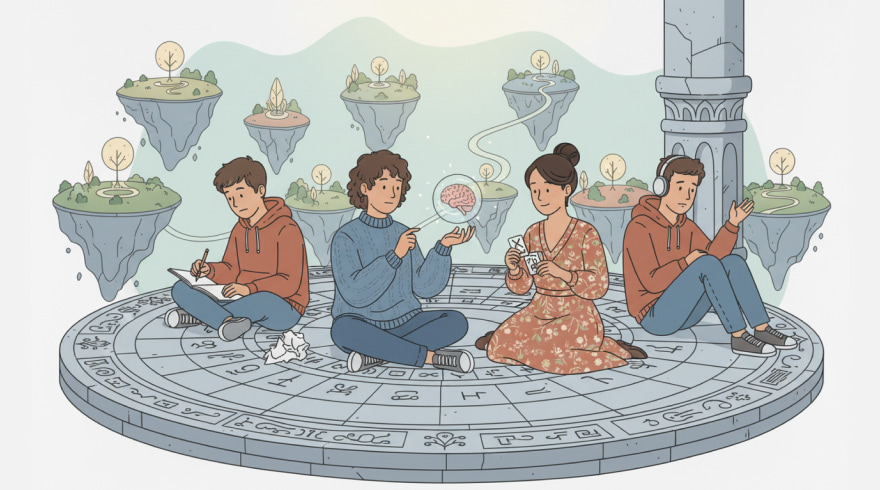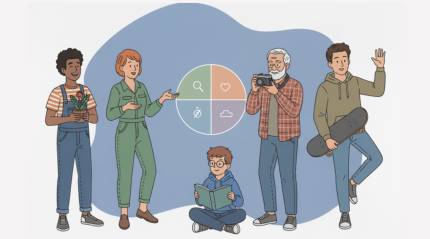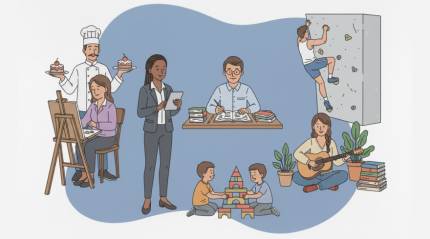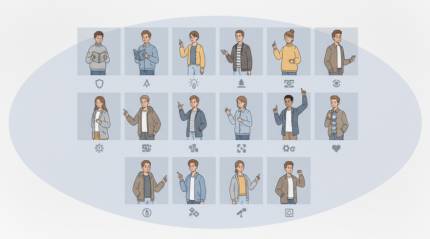MBTI Test 16 Personalities: A Complete, Insightful, and Search-Optimized Guide
- 17 November 2025

16 Personalities Test Online: Find Your MBTI Type
Get StartedWhat Is the MBTI and Why Does It Captivate People
Personality frameworks can help people put language to patterns they already sense in daily life. Among newcomers, the phrase MBTI test 16 personalities often appears in searches, yet the foundation goes deeper than catchy titles and trendy infographics. Created from Jungian ideas, the indicator maps recurring preferences rather than rigid abilities. That simple idea has scaled into a global conversation about motivation, energy, and work styles that people recognize in themselves and in others.
At its core, the model looks at how we refuel, process information, decide, and organize. In many communities, MBTI 16 personalities act like a shorthand for sixteen recognizable patterns that show up across cultures and across stages of life. These patterns do not lock you in place, because people flex outside their defaults when contexts demand it. Still, understanding an enduring preference can sharpen self-awareness and improve team dynamics, especially when it’s translated into clear agreements and habits.
- It provides a shared vocabulary that reduces friction and speeds collaboration.
- It highlights strengths that might otherwise be dismissed as quirks or weaknesses.
- It offers a neutral, nonjudgmental lens for discussing conflict and stress.
How the Model Works: Dichotomies and Cognitive Dynamics
The engine of the framework is a set of four dichotomies that describe orientation and cognition. When people seek clarity before trying tools, the label MBTI 16 personality test tends to signal a structured questionnaire that aggregates your leaning across those pairs and reports a best-fit type. Because the model is preference-based, it captures where mental energy naturally flows instead of measuring aptitude. Cognitive dynamics then explore how those preferences interact under stress or mastery, revealing patterns in decision-making and communication.
- Extraversion vs. Introversion: outward energy exchange versus inner recharge.
- Sensing vs. Intuition: concrete detail focus versus pattern and possibility focus.
- Thinking vs. Feeling: impersonal logic versus values-centered considerations.
- Judging vs. Perceiving: structured closure versus adaptive openness.
Beyond the letters, it helps to look at patterns that emerge in real situations. For many learners, 16 personality test MBTI becomes a gateway to reflection when combined with examples, journaling, and coaching that connect theory to everyday choices. Skillful practitioners emphasize that type points to preference, and preference points to likely strategies, not to fixed limits.
Benefits for Career, Teams, and Personal Growth
Practical payoffs show up fast when you apply insights with respect and nuance. In hiring and development, the phrase MBTI 16 personalities test often catalyzes discussions about role fit and growth paths that respect both strengths and stretch areas. Managers who translate preferences into team agreements see smoother meetings, clearer handoffs, and fewer misunderstandings. Individuals notice stress triggers earlier, recover more intelligently, and build routines that match how their attention and energy work best.
In schools and families, shared vocabulary reduces friction and builds empathy. For casual exploration, many people enjoy a community-driven activity like MBTI quiz 16 personalities while remembering that context and maturity shape how types appear in real life. Sustainable growth emerges when people use results as a hypothesis, validate insights through feedback, and iterate on habits that align with their environment.
- Career clarity: tailor job search, interview prep, and onboarding to natural preferences.
- Team synergy: align communication, decision cadence, and meeting formats with diverse styles.
- Leadership development: build influence by flexing across audiences and situations.
- Conflict navigation: defuse tension by naming different problem-solving priorities.
- Well-being: craft routines that balance stimulation, solitude, planning, and spontaneity.
Sixteen Types at a Glance: Patterns, Nicknames, and Practical Hints
A quick survey of the sixteen patterns can anchor abstractions in concrete language. Readers who want an overview appreciate that MBTI personality test 16 personalities maps each code to everyday behaviors you can actually observe in conversations, projects, and stress responses. The nicknames below are mnemonics, not boxes, and they work best as prompts for curiosity rather than definitive portraits.
| Type | Nickname | Core Strength Focus |
|---|---|---|
| ISTJ | Inspector | Reliability, procedures, duty |
| ISFJ | Protector | Care, stewardship, loyalty |
| INFJ | Guide | Insight, meaning, mentoring |
| INTJ | Strategist | Vision, systems, foresight |
| ISTP | Crafter | Troubleshooting, precision, agility |
| ISFP | Artist | Authenticity, aesthetics, empathy |
| INFP | Idealist | Values, imagination, harmony |
| INTP | Analyst | Logic, frameworks, curiosity |
| ESTP | Activator | Action, improvisation, results |
| ESFP | Entertainer | Engagement, enthusiasm, presence |
| ENFP | Campaigner | Inspiration, possibilities, connection |
| ENTP | Inventor | Ideation, debate, flexibility |
| ESTJ | Executor | Organization, standards, delivery |
| ESFJ | Host | Support, coordination, tradition |
| ENFJ | Coach | Development, diplomacy, vision |
| ENTJ | Commander | Direction, efficiency, scaling |
After scanning the grid, notice how temperaments cluster around communication and planning styles. If you prefer to experiment before a deep dive, resources labeled MBTI test 16 personalities free can offer a low-pressure starting point for reflection and journaling. Keep notes on where you agree and where you feel torn, because those tension points often unlock the most growth.
How to Take and Interpret Your Results for Real-life Impact
Preparation matters if you want meaningful insight rather than novelty. Before beginning, some learners try a community-built option such as MBTI 16 personalities free test to get a baseline snapshot without cost and without pressure. Treat the outcome as a hypothesis to test against your experience rather than a verdict, and bring your closest collaborators into the conversation for richer feedback.
- Set the scene: answer when rested, unrushed, and free from performance pressure.
- Choose honestly: select responses that describe your natural default, not your idealized self.
- Validate: compare results to patterns in school, work, and relationships.
- Apply: turn insights into experiments, such as calendar tweaks or meeting norms.
- Review: revisit after projects or life transitions to refine your self-understanding.
Reflection turns a code into concrete change, which is why journaling and feedback circles accelerate learning. For comprehensive detail, a paid report or official administration that many call MBTI 16 full version can add nuanced facets and development tips that help you personalize next steps. No matter the path, prioritize curiosity and humility so insights translate into better choices, not rigid labels.
Limitations, Ethics, and Best Practices to Keep It Useful
No instrument captures the full complexity of a person, and this one is no exception. For people in a hurry, the phrase quick MBTI test 16 personalities can be tempting, yet results will be thin without thoughtful reflection and context. Responsible practice treats type as a probability map, not a prophecy, and invites people to describe exceptions as well as patterns. The more you pair results with behavior evidence, the more accurate and humane your conclusions become.
Ethical usage means never using type to gate opportunities or excuse bad behavior. Those who enjoy richer narratives often appreciate long-form explorations like MBTI test 16 personalities detailed because nuance protects against stereotypes and overconfidence. Combine curiosity with data, invite dissenting views, and iterate on experiments so your insights stay grounded. With that stance, the framework becomes a lens that clarifies decisions, relationships, and growth strategies.
FAQ: Common Questions About MBTI and Sixteen Types
Is MBTI a test of skill or intelligence?
It is not an ability measure; it identifies preferences for how you focus attention, gather information, make decisions, and approach structure. Many people with different types can excel in the same role through distinct strategies.
Can my type change over time?
Core preferences tend to be stable, but expression can shift with experience, environment, and deliberate practice. People also learn to flex outside their defaults, which can make results feel different during major life transitions.
Should organizations use it for hiring decisions?
Best practice is developmental, not gatekeeping. Use it for team communication, leadership coaching, and career conversations, and combine it with validated job-relevant assessments when selection decisions are required.
Why do I feel torn between two neighboring types?
Borderline scores often reflect situational habits, social expectations, or limited self-observation. Collect stories from your history, ask trusted peers for examples, and test daily experiments to see which preferences feel more sustainable.
How do I apply insights without stereotyping people?
Treat type as a starting hypothesis, ask permission before applying labels, and look for behaviors rather than assumptions. The most helpful use emphasizes strengths, anticipates blind spots, and adapts plans to the person in front of you.



